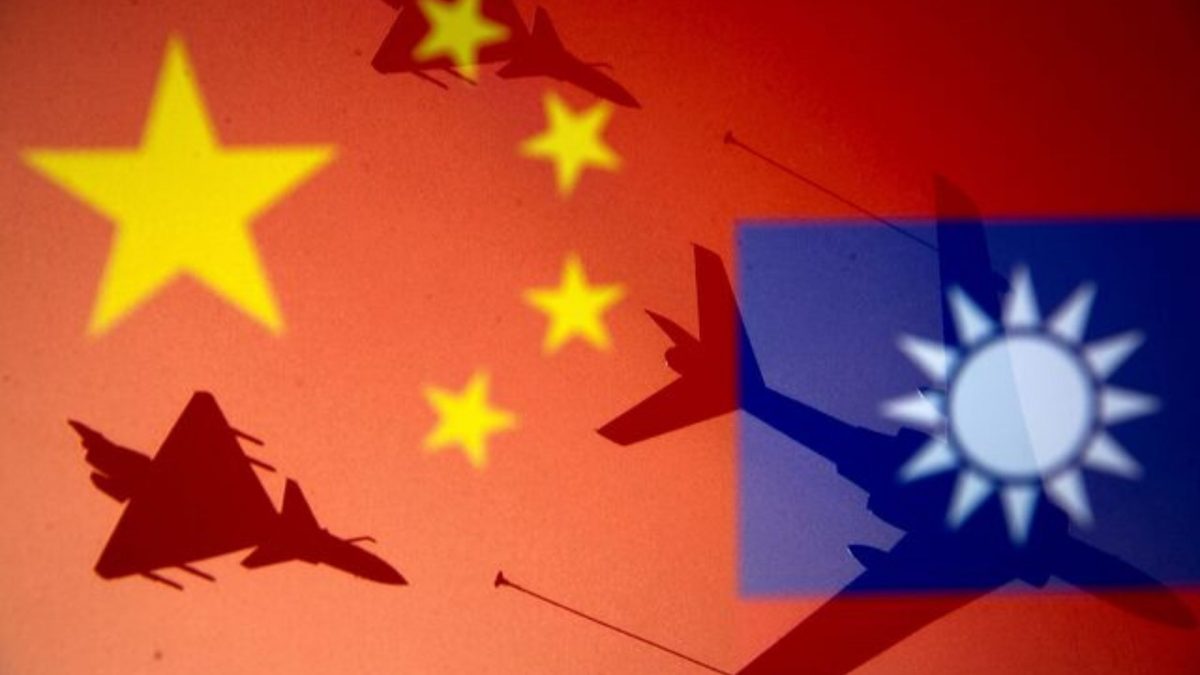China’s $15.3 billion spending on these exercises is equivalent to about 85 per cent of Taiwan’s 2023 defence budget. The Chinese state-backed Global Times has previously reported that the deployment of Chinese carrier groups is not just aimed at Taiwan but also at countering external forces read more
)
Chinese and Taiwanese national flags are displayed alongside military airplanes in this illustration. File image/Reuters
China allocated approximately $15.3 billion, or 7 per cent of its defence budget, to military exercises in the Western Pacific in 2023.
According to figures in an unpublished estimate compiled by Taiwan’s armed forces and reviewed by Reuters, China’s military activities in the Western Pacific involved 1.7 million hours at sea and over 29,000 hours in the air.
This included more than 9,200 flights by Chinese aircraft and 70,000 naval sailings, encompassing a wide range of military assets such as J-10 fighter jets, H-6 bombers, drones, aircraft carriers, and destroyers. The report calculates the total cost at 110 billion yuan ($15.3 billion), factoring in expenses like fuel, maintenance, repairs, and personnel salaries.
This is part of China’s grey zone warfare strategy where its military, and often civilian “research vessels” carry out aggressive and sometimes hostile manouvres that fall below the threshold of conventional warfare. Grey zone warfare tactics aim to psychologically and financially exhaust the adversary by forcing them to remain in a constant state of high alert for an attack.
Areas of interest
The report, completed in May this year, is based on Taiwanese surveillance and intelligence on Chinese military operations across various strategic locations, including the Bohai Sea, the East China Sea, the Taiwan Strait, the South China Sea, and the Western Pacific Ocean.
Reuters, citing the Taiwanese internal report, pointed out that roughly 40 per cent of naval journeys by Chinese vessels are concentrated in the South China Sea, 20 per cent in the East China Sea near Japan and South Korea, and nearly 15 per cent in the Taiwan Strait.
“This reveals the logic of allocation of their resources,” said a senior Taiwan official briefed on the research. “They are spending a huge amount of resources trying to gain control of the west of the First Island Chain.”
The First Island Chain is a collection of archipelagos running roughly from Indonesia in an arc northeast to Japan, encompassing the South China Sea and East China Sea, and including the contested Kuril Islands and the Ryukyu Islands, as well as northern Philippines.
A big ‘gap’ for Taiwan
The research was conducted to assist Taiwanese decision-makers in understanding how China distributes military resources across regions and to assess Taipei’s perception of a “gap” between Beijing’s intentions and its capabilities. This information was shared by three officials who were briefed on the reports.
Experts noted that while the report’s methodology is feasible, it inevitably includes some estimates and assumptions. However, they agreed that the data provides valuable insights into China’s military spending and strategic priorities in the region.
China’s $15.3 billion spending on these exercises is equivalent to about 85 per cent of Taiwan’s 2023 defence budget, Reuters’ calculations showed.
China wary of ’external forces’
Both Washington and Beijing have increased the frequency of military drills across Asia in recent years, though China’s exercises are still considered to lag behind in scale and complexity compared to those conducted by the US and its allies.
The Chinese state-backed Global Times has previously reported that the deployment of Chinese carrier groups into the Western Pacific is part of a broader strategy, not just aimed at Taiwan but also at countering external forces.
“China’s carrier battle group is facing not only the Taiwan authorities, but also the interference of external forces,” military expert Song Zhongping told the newspaper.
With inputs from Reuters

 3 weeks ago
9
3 weeks ago
9
)
)
)
)
)
)
)
)
)
)
)
)
)
)
)
)
)
)
)
)
)
)
)
)
)
 English (US) ·
English (US) ·